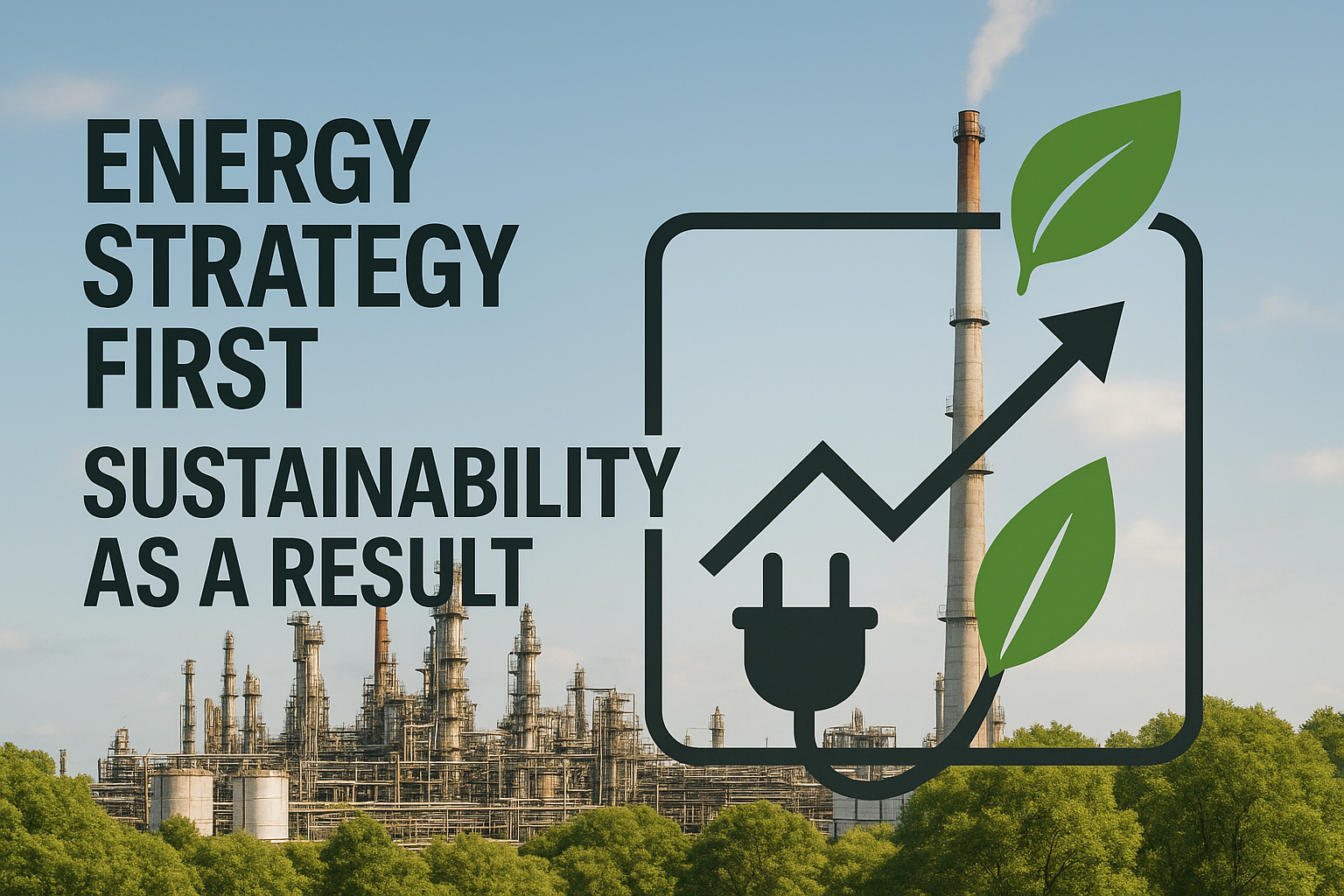Industrial operations consumed about 33% of the total U.S. end-use energy in 2022, underscoring the massive energy footprint of this sector. Rising natural gas prices and stringent emissions compliance add to the financial burden, prompting a need for efficient solutions. Yet, many plants still depend on traditional linear Advanced Process Control (APC) systems and manual setpoints, missing substantial savings opportunities.
Artificial intelligence-driven optimization emerges as a transformative solution, promising significant boosts in operational efficiency and profit margins. Unlike conventional APC systems, AI can dynamically adapt to changing conditions, enabling continuous improvements in fuel efficiency and emissions reductions.
By exploring how AI outperforms traditional approaches and examining quantifiable benefits, we’ll provide a clear roadmap for revolutionizing your furnace operations while aligning cost savings with sustainability goals.
The Critical Role of Natural Gas Furnaces in Process Operations
Natural gas furnaces sit at the heart of high-value units such as crude heaters, steam crackers, and reformers. Each burner can consume significant energy per hour, making these assets some of a site’s largest energy users. Furnace efficiency directly shapes both operating expense and emissions performance since combustion products become CO₂ emissions.
Operators must balance combustion efficiency, draft stability, stack oxygen, and tube-metal temperature; factors that rarely move in unison. Insufficient air risks unburned hydrocarbons and regulatory penalties, while excess air steals heat from the radiant zone. Over-firing protects throughput in the short term but accelerates coking and metallurgical stress, triggering costly maintenance.
When furnace control becomes inconsistent, facilities face elevated fuel spend and excess emissions that complicate the pathway to corporate sustainability goals. Consistent, precise furnace operation underpins reliable production rates, longer asset life, and the flexibility to capitalize on favorable market conditions.
How Traditional APC Manages Furnace Operations
Traditional advanced process control relies on linear-model logic to manipulate draft, stack O₂, fuel flow, and bridgewall temperature. By holding these variables near predefined targets, APC smooths out operator-to-operator variability and shields furnaces from sudden disturbances, leading to steadier production and fewer manual interventions.
However, linear models struggle in the inherently nonlinear environment of fired heaters. Static coefficients assume “average” conditions, so engineers must retune controllers whenever feed composition, ambient weather, or burner health drifts.
These updates are manual and infrequent, so controllers often revert to conservative setpoints that sacrifice fuel efficiency for a margin of safety. This fixed-cushion approach lets valuable heat escape the stack, inflating energy costs and emissions while still meeting product specs.
The result is a “safe but wasteful” operating zone: furnaces stay within metallurgical and emissions limits, yet run hotter and with more excess air than economically necessary. Traditional APC creates this gap that advanced AI optimization is now poised to close.
Why Natural Gas Furnace Optimization Demands Advanced AI
Natural-gas furnaces operate in a swirl of nonlinear heat transfer, shifting feed composition, and ambient swings that can change burner performance minute by minute. Conventional control systems treat this turbulence with linear assumptions, forcing wide safety cushions that waste fuel and create excess CO₂.
An AI Optimization approach replaces those static equations with reinforcement learning models that continuously adapt as conditions evolve. Trained on months of operational history, the model anticipates how a small tweak to draft or burner staging will ripple through bridgewall temperatures, metallurgy limits, and emission caps. Because the policy updates continuously, the furnace stays closer to its true optimum instead of drifting back toward conservative setpoints.
AI’s edge grows with data breadth. By integrating thousands of sensor signals, weather feeds, and even market pricing, an AI optimization platform balances multiple objectives—efficiency, tube-metal protection, and compliance—simultaneously. Plants using this strategy can expect tighter control and measurable reductions in natural-gas use.
How AI Optimization Transforms Furnace Performance
Artificial intelligence optimization begins by streaming thousands of sensor and plant data into a living model that mirrors your furnace in real-time. Using reinforcement learning, the model continuously learns from every pressure pulse, weather swing, and feed change, maintaining accuracy long after a traditional APC model drifts out of tune.
Once deployed, the AI writes optimal setpoints back to the control system in real-time—shaving excess air, balancing burner patterns, and nudging fuel flow to the precise rate that meets demand without breaching tube-metal-temperature or emissions limits set by regulators. Because the model recalculates constraints every few seconds, it can safely shrink the “cushions” traditional control systems leave in place, turning lost heat into usable throughput.
Plants using this approach have reported energy cuts of 15–30% while holding tighter product specs and avoiding unplanned shutdowns. When an unexpected feed composition arrives or a sudden cold front hits, the AI adapts immediately, something static APC simply cannot match, helping you lower fuel bills, reduce CO₂, and keep production on target.
Quantifiable Benefits of AI-Powered Furnace Control
Closed Loop AI Optimization delivers measurable gains that impact plant profitability directly. A McKinsey study found that advanced industrial AI can lift production 10-15 percent while raising EBITDA 4-5 percent. Furnaces represent some of the most fuel-intensive assets where these improvements make the biggest difference.
Field deployments consistently reduce natural gas consumption by 15–30 percent. Since combustion and CO₂ output are directly proportional, these fuel savings translate into emissions reductions.
Beyond energy savings, reduced stack losses and more consistent burner operation minimize thermal stress, extending tube-metal life and reducing maintenance costs.
Plants avoid the capital costs and downtime associated with equipment retrofits since AI solutions can be deployed in weeks and typically pay for themselves within a single budget cycle. The combined impact supports corporate sustainability targets, reduces operating costs, and improves reliability, all while maintaining the safety constraints that protect front-line operations.
Implementing AI Optimization for Natural Gas Furnaces
Rolling out intelligent optimization is an additive exercise, layering a learning engine on top of existing advanced process control and distributed control system infrastructure. Projects typically move from concept to closed-loop control without disrupting production through a structured implementation approach.
The deployment begins with an optimization workshop where teams map objectives, review instrumentation, and extract months of existing plant data for model training. This foundation enables building and testing a proof-of-value model offline, using that baseline to predict savings and verify constraint handling. Economic validation follows, where the model gets refined with plant subject-matter experts so the projected benefit matches site economics.
The transition from advisory deployment to closed loop represents the final phase. The AI runs in advisory mode first, allowing operators to compare recommendations with their own moves, then enables automatic writes to the control system once confidence is established. This phased approach builds trust while minimizing risk.
Core signals include bridgewall temperatures, stack O₂ and CO, fuel and air flows, draft pressures, and critical metal-skin temperatures. Because the AI connects through open industry protocols, integration is non-intrusive and can often be streamlined compared to traditional upgrades, though timelines may vary depending on the complexity of existing systems.
Common hurdles are mitigated through offline simulation, explainable recommendations, and phased autonomy, allowing plants to reach sustained fuel and emissions improvements while avoiding the downtime and capital intensity of major hardware retrofits.
Building Operator Confidence in AI-Driven Furnace Control
Seasoned operators understand their furnaces intimately, so any new technology must prove it will protect their equipment before it can optimize performance. Confidence starts with transparency: a dashboard exposes the cost, efficiency, and safety limits that guide every real-time move, while hard interlocks inside the control system ensure tube-metal temperatures and emissions never cross boundaries.
Most plants launch in advisory mode, letting crews compare the intelligent system’s recommended fuel-air trims with their own decisions. Because the model writes no setpoints until you allow it, operators can override with a single click, observe results, and gradually build trust in the technology.
A virtual replica built from historical plant data becomes a risk-free simulator for shift training. Teams can practice unusual feed swings or ambient drops and watch the optimization solution stabilize the furnace faster than manual tuning. This approach helps close skills gaps and builds confidence in AI-driven operations.
As familiarity grows, roles evolve: operators shift from firefighting to strategic oversight, retaining domain expertise while the intelligent system handles routine adjustments. The result is an upskilled workforce that can extract more value from every unit of natural gas.
Achieve Natural Gas Furnace Optimization with Imubit’s AIO
Moving from traditional APC to closed-loop artificial intelligence can unlock measurable improvements: lower natural gas use, fewer CO₂ tons, and tighter metallurgy—all captured in real-time rather than through periodic retuning.
The Imubit Industrial AI Platform combines historical context with live data to continually push every furnace toward its profitable, compliant sweet spot. This data-driven, transparent approach has delivered single- to double-digit fuel savings and emissions cuts in documented projects, with the largest reductions reported in certain applications, based primarily on Imubit’s internal case studies. Get a complimentary Plant AIO assessment to determine your furnace savings and see the opportunity inside your own data.




